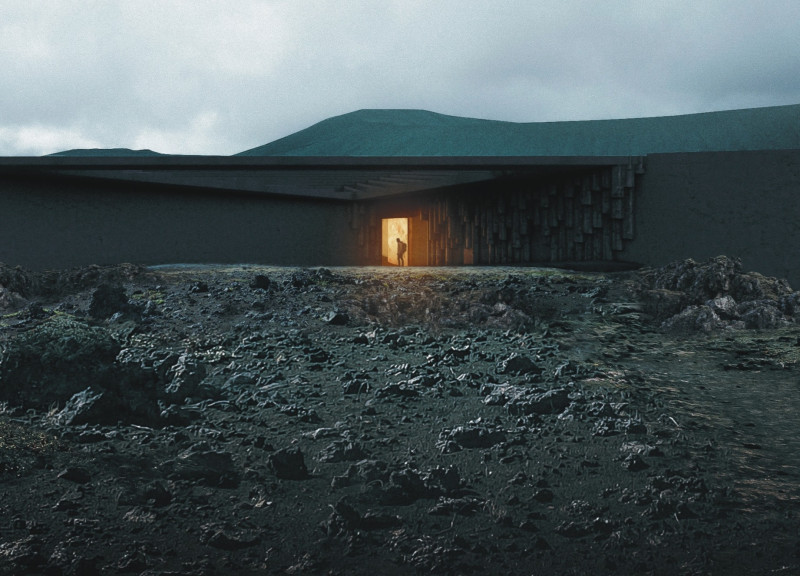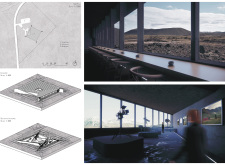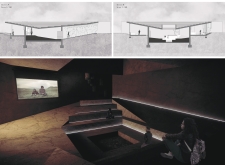5 key facts about this project
The Earth's Burden Pavilion in Iceland is an architectural work that deeply interacts with its surrounding landscape. Located near Grjótagjá, it serves as a space for contemplation and reflection about the relationship people have with nature. The design revolves around the idea of the Earth bearing the weight of the sky, similar to the mythical figure Atlas who holds the heavens. This concept is reflected in the structure's form and layout, allowing visitors to explore the connections between the land and the atmosphere.
Central Core and Spatial Organization
The pavilion features a central core from which four load-bearing walls extend. This arrangement creates a structured connection between the interior and the exterior. The design includes sunken enclosures around a central projection room, enhancing the experience for those inside while emphasizing the themes of pressure and heaviness characteristic of the landscape.
Form Development and Geometry
The shape of the pavilion is influenced by the inverted pyramid, which serves as a representation of Earth’s weight. This geometric approach supports both the building's stability and its deeper meaning. The roof is a square, rotated in relation to the main walls, resembling an irregular cave. This form provides a sheltered environment while prompting visitors to consider the vast sky above.
Materiality and Presence
Materials are chosen with care, using textured concrete for the walls to create a physical connection to the environment. Basaltic columns extend from the roof, reflecting the natural geology of Iceland while anchoring the structure within its context. The choice of materials not only adds to the visual appeal but also strengthens the thematic connections to the heavy sky.
Inside the pavilion, visitors find carved stone bleachers that focus on a skylight. This detail creates a direct link between those present and the heavens above, fostering engagement with the natural surroundings. Guests are encouraged to reflect on their place within the landscape while experiencing the contrasting elements of earth and sky.






















































